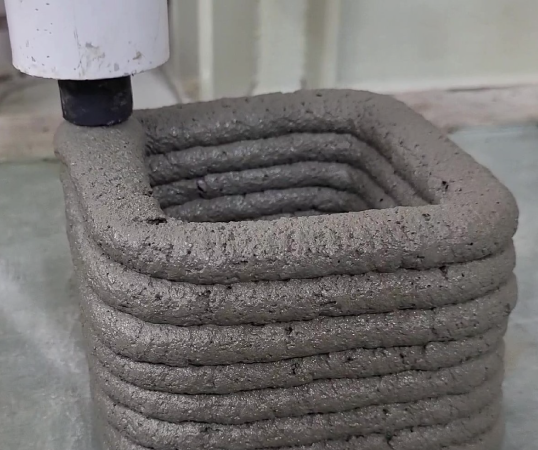
Register with Plumtri!
Register on plumtri as an Individual or as an Organisation to gain access to all of its useful features and remain updated on the latest R&I news, events and funding opportunities.
-
 Welcome to plumtriA platform for Research & Innovation
Welcome to plumtriA platform for Research & Innovation -
 Looking for Funding?Check out the current open calls
Looking for Funding?Check out the current open calls -
 Register today to start receiving our monthly newsletter
Register today to start receiving our monthly newsletter -
 Looking to partner up?Search our list of registered profiles
Looking to partner up?Search our list of registered profiles -
 You have questions on a particular funding programme?
You have questions on a particular funding programme?
Project 3D Concrete - From Waste to Resource in Additive Manufacturing: 3D Concrete Printing

Friday, May 2, 2025
The urgent environmental challenges and a growing need for sustainable solutions have put the construction industry at a turning point. A new research project at the university is investigating an innovative method for developing high-performance, eco-friendly building materials by combining industrial by-products and construction waste with 3D concrete printing.
Conventional construction techniques present limitations, mostly depend on human interventions, and consume great quantities of natural resources. They are also responsible for a significant share of carbon emissions and the generation of solid waste. In fact, construction and demolition waste accounts for up to 40% of the world’s total solid waste. The challenges encountered by the traditional construction methods might be well addressed by 3D concrete printing technique. At the same time, concrete presents a unique opportunity through the incorporation of recycled materials and industrial waste, which can reduce both environmental impact and the demand for raw resources.
Currently the University of Malta is working on 3D Concrete (3D Printing of Concrete for Sustainable Construction). This project explores how 3D printing can collaborate with sustainable materials to transform construction methods. The team is developing an innovative low-impact concrete composed of limestone waste, recycled aggregates, and other industrial by-products. The concrete mix is specially designed to meet the performance requirements of 3D printing, offering both structural strength and environmental benefits.
A gantry-type 3D printer is used to produce prototype construction elements using the new concrete mix. This setup allows for the development and testing of advanced printing techniques, including adjustments to print-head technology and material flow behaviour. The developed concrete is evaluated for its rheological properties to ensure it meets the specific printability requirements. These requirements are pumpability, extrudability, and buildability. Mechanical properties of the concrete, including layer bonding, compressive strength, and overall durability, are also assessed.
The main objective of the project is to develop a high-performance concrete material suitable for 3D printing applications. This research stands at the forefront of merging cutting-edge technology with sustainable materials for a better-built future.
The Project is financed through Xjenza Malta “FUSION Research and Innovation: Research Excellence Programme (REP) 2023”. For further information, please contact the project Principal Investigator Prof. Ruben Paul Borg, Faculty for the Built Environment, University of Malta.
